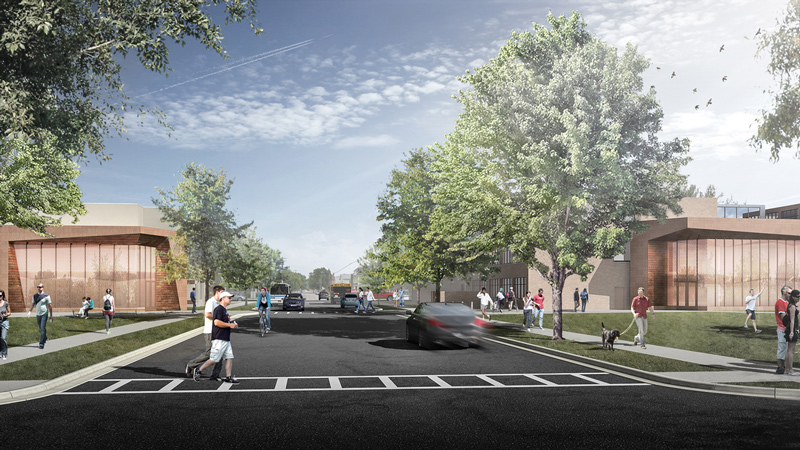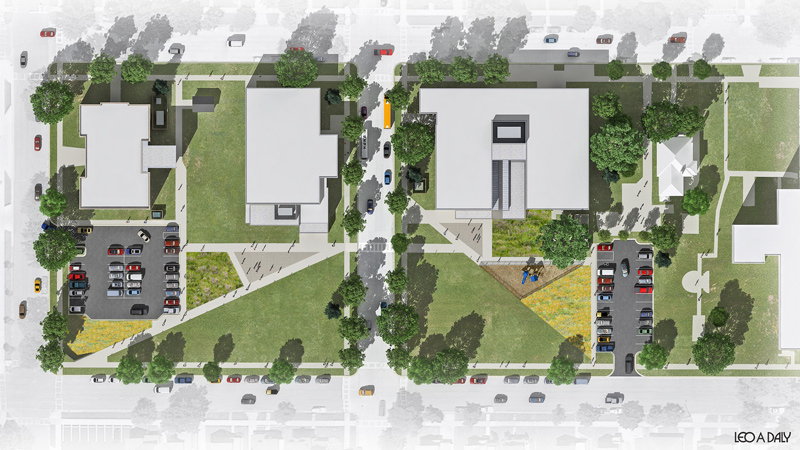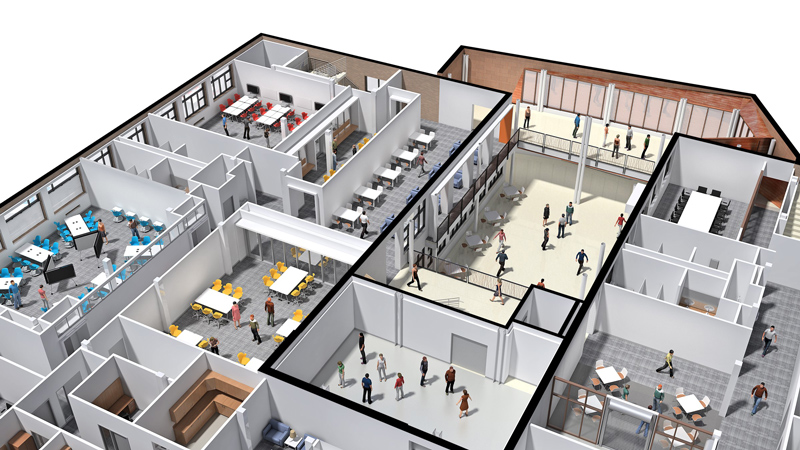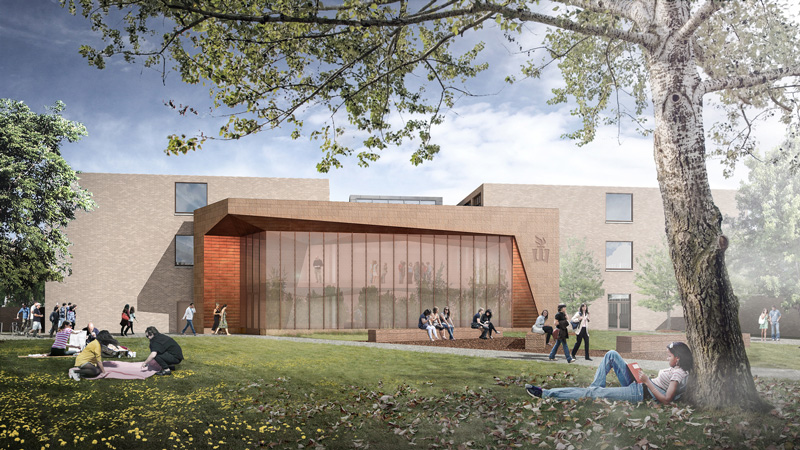Recent Articles
Education Village balances history and tech
In School Construction News, Joe Bower discusses LEO A DALY’s cutting-edge design for Winona State University’s new mini-campus for teacher education
Education Village, the new home for Winona State University’s College of Education, balances cutting-edge learning spaces with traditional classrooms to offer teachers a spectrum of real-world experience. Rachel Leber of School Construction News caught up with LEO A DALY’s Joe Bower, AIA, to hear about the design.
Excerpted from the article:
Construction is currently under way at Winona State University (WSU) on a new Education Village, a state-of-the-art mini-campus for teacher education creating a new section of campus and home for the College of Education.
The 100,000-square-foot project will allow future teachers to train in the internationally recognized Winona Model, which focuses on early clinical experiences in real-world situations. In addition, the adjacent-to-campus location of the village offers the community a better opportunity to engage in lifelong learning and to benefit from the college’s various community-related programming.
Education Village will provide 18 dedicated learning spaces, including two STEM classrooms, eight technology-enabled active learning classrooms (TEAL), three general purpose classrooms, one “historic” classroom, one maker space and three seminar rooms. Wabasha Hall — the new main hub of Education Village — will function as a learning lab and gathering place called The Commons. The space will feature a large atrium addition as well as a child-care center, counselor-education facilities, breakout spaces for group work and experimental classrooms.
Wabasha Rec — a former gym — will house physical education and adaptive-sports teaching programs, and will serve as a collaborative space where students will gather adjacent to the climbing wall gymnasium, academic offices and classrooms. The Cathedral School, a historic schoolhouse built in 1929, will preserve low-tech classrooms relevant to the current spectrum of American schools, and house post-graduate teacher-development functions, administrative offices and the dean’s suite.
The design has a wide stylistic range, from fully historic classrooms with blackboards to the most advanced, technology-enabled active-learning classrooms, STEM labs, maker spaces and special-education classrooms. The design team will maintain a cohesive look and feel for the new facility to match with the overall college, and is doing so in part by using local “Winona limestone,” which forms the cladding for the additions, according to Joe Bower, senior architect at LEO A DALY.
“The biggest challenge was striking the right balance between achieving a cutting-edge 21st century learning environment that would be fiscally responsible, all while avoiding trends and remaining relevant and adaptable for decades to come,” said Bower. “We did that by embracing technology in some places, and by staying more hands-on in others.”
Education Village also complies with the state of Minnesota’s B3 program, which is a statewide sustainability system that mirrors LEED standards. The project itself is “rooted in sustainability” in that it reuses three existing buildings, according to Bower. The design combines daylighting strategies, efficient mechanical systems, optimized energy usage, sustainable site design and a number of other measure to achieve what would be equivalent to a LEED Silver level of sustainable design.
Read more:




